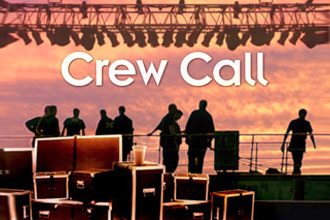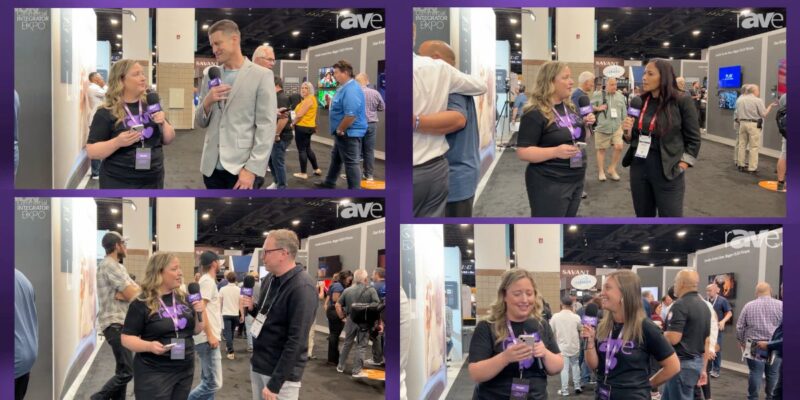Unified Everything: Part 2
 Last month, we considered the idea that it isn’t just the disciplines of IT and AV that are converging, but that the tools and components of both disciplines are combining in many AV shows or installations.
Last month, we considered the idea that it isn’t just the disciplines of IT and AV that are converging, but that the tools and components of both disciplines are combining in many AV shows or installations.
This earned me some criticism about the way I had misused the term “convergence” (much of it from another rAVe blogger, Mark Coxon). I certainly accept that I had used the word in a way not currently the norm in our industry, but this use was intentional. If you missed the original article, you can find it here, and the conversation that ensued can be found here, if you care to catch up with it.
Anyway, there were some points made in the original article that I had determined to explore:
- First, that the nature of electronics development says that components, which are being combined now, will continue to converge in many ways. Among these are the convergence of AV and IT functions as well as the merger of multiple devices and functions into single hardware units, or even into software or virtual functions.
- Second, that devices being combined can sacrifice capabilities (usually those least commonly used) in favor of simplicity.
- Third, (and the idea I really wanted to explore this month) that this convergence can affect our bottom lines, and the way we operate. In fact, it may be making many of our traditional ideas about how our business is structured obsolete.
The traditional business model for an AV rental and staging company rests largely on shows being the sum of their parts. In other words, on renting gear. Most rental quotes read like an inventory of the truck that goes to site, with each piece of gear having a daily rate. I, and a lot of my contemporaries, have argued against this model for a long time, but changing the market is like turning a battleship. Combine this with the fact that most computer inventory systems generate quotes in the same manner, fundamentally as lists of items, and it’s easy to see why most of the market works this way. It’s the norm and the path of least resistance.
Now, combine the fact that while most of the line items on our rental quotes are for gear with the reality that our biggest costs are in labor — in personnel. Not only is this already a problem we have been fighting for the last couple of decades or so, but it is multiplied by today’s multi-function electronic gear.
How so?
Simple. It’s because the new, highly-programmable, DSP-based, network-capable, software driven equipment requires investing a lot more not-traditionally-billable labor in the form of configuration and programming time (not to mention debugging).
Let me give you an example:
Today, an audio DSP processor can replace many of what used to be dedicated, single-purpose devices: equalizers, compressors, limiters, speaker system processing, etc.
In the “olden days” (phrase used for Mark Coxon’s amusement), each of these functions would have been performed by a dedicated piece of gear — in other words, a billable line item. Placing a new EQ in inventory involved putting a label on it, entering it into our inventory system, and putting it on the shelves in the warehouse. So the acquisition cost of the item was the cost of buying it, and the cost of unpacking it.
The first of the profitability concerns over this reduction in line items is: Does the new multi-function rental item rent for as much as the dedicated components did? Because it normally costs more to buy, and often doesn’t last as long in inventory.
But even that cost is oversimplified and misses something, because the acquisition cost of the DSP item now includes a lot more training, preparation and programming just to place it in inventory — to prepare it to work with the rest of our gear. And, unlike the dedicated components, this process will have to be repeated many times, since most of us don’t keep only full, dedicated systems on the shelves. We tend to package and configure systems from components much of the time, and the programming time for much of the newer gear will have to be completed for each new configuration until we have built that vital library of config files — by which time the new processor will be replaced by an even newer, even spiffier one. And we begin the process all over again. And, during the period the new multifunction item is in our inventory, there are somewhat increased costs of training time, and some higher-cost tools (like notebooks, tablets, and access software) for our technical crew.
So many of the actual operational and acquisition costs of gear become “fuzzy.” Sometimes we simply accept them as the new cost of doing business, watching them creep into the monthly overhead costs. And sometimes, we don’t even realize they are there. And, truth to tell, sometimes we ignore them — because we can’t figure out how to charge our clients for time spent updating firmware.
By all this, am I advocating a return to older technologies? Of course not. You can be part of the steamroller, or part of the road. And the new technologies open new possibilities, and I am always the first one to go down to the loading dock when a delivery of the latest and greatest arrives.
But it changes things…
And I guess that was the point of this entire exercise. We need to examine the very nature of the way business is done in most of the AV rental industry. As equipment for AV converges with equipment for IT, as boxes consolidate into fewer components, and as many devices disappear altogether into software and cloud-based services, we need to redefine ourselves — and what it is we are renting.





